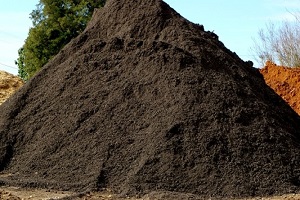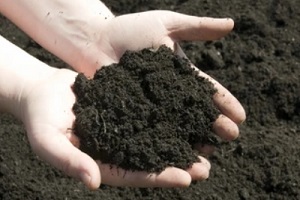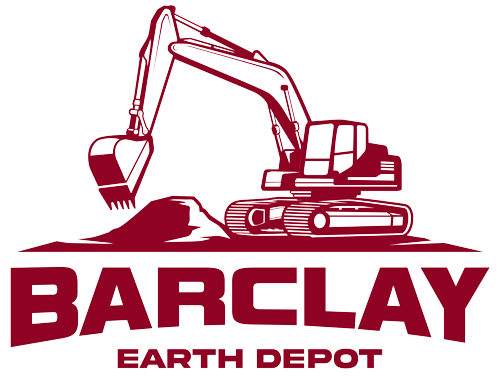 Fill dirt is often seen as the less desirable cousin of topsoil, but with a little effort and the right approach, you can transform fill dirt into nutrient-rich topsoil. This step-by-step guide will help you create healthy, vibrant soil that supports plant growth.
Fill dirt is often seen as the less desirable cousin of topsoil, but with a little effort and the right approach, you can transform fill dirt into nutrient-rich topsoil. This step-by-step guide will help you create healthy, vibrant soil that supports plant growth.
Step 1: Choose Quality Fill Dirt
Starting with quality fill dirt is essential for a successful soil improvement project. Ask the supplier to review the soil lab test results to ensure that the fill dirt is free of contaminants, such as chemicals, heavy metals, or excessive organic matter, as this provides a safe and clean foundation for your garden. A balanced texture and structure are also necessary for proper drainage, aeration, and healthy root growth.
Step 2: Mix Compost into Fill Dirt
Mix in generous amounts of compost to effectively transform fill dirt into topsoil. Compost enriches the soil with organic matter, beneficial microorganisms, and essential nutrients. Spread compost evenly over the fill dirt and blend it thoroughly, improving soil structure, water retention, and nutrient availability for plants.
This integration of compost not only initiates the transformation process but also fosters a healthy garden with robust plant growth. In addition, regularly incorporating compost will ensure continued soil fertility over time.
Step 3: Apply Wood Chips to the Soil
Wood chips help in multiple ways, such as retaining moisture, suppressing weeds, and providing a habitat for beneficial organisms. Spread wood chips over the soil surface, which will act as a natural mulch.
As the wood chips decompose, they release nutrients into the soil and contribute to its overall structure. This process aids in fostering a balanced soil ecosystem, supporting the transformation of fill dirt into topsoil and encouraging healthy plant growth.
Step 4: Allow Fallen Leaves to Decompose
 Instead of removing leaves from your garden, let them decompose on the fill dirt and compost mixture. Decomposing leaves attract a variety of beneficial organisms, such as earthworms and fungi, which contribute to the soil’s fertility and structure.
Instead of removing leaves from your garden, let them decompose on the fill dirt and compost mixture. Decomposing leaves attract a variety of beneficial organisms, such as earthworms and fungi, which contribute to the soil’s fertility and structure.
By allowing fallen leaves to decompose naturally, you enhance the ongoing process of transforming fill dirt into nutrient-rich topsoil, creating an ideal environment for your plants to thrive.
Step 5: Practice Minimal Soil Disturbance
Frequent tilling and turning can disrupt the natural structure and balance of the soil, leading to issues such as compaction, erosion, and a decline in beneficial organisms. To preserve your soil’s health during the transformation process, practice minimal soil disturbance.
Limit tilling and turning and consider adopting no-till or low-till gardening practices. These methods help maintain the soil’s structure and encourage the growth of beneficial microorganisms that are crucial for turning fill dirt into topsoil.
Step 6: Abandon Chemical Fertilizers and Herbicides
You should stop using chemical fertilizers and herbicides to protect the developing topsoil from potential harm. While these products may provide short-term benefits, they can ultimately disrupt the natural balance of your soil and harm beneficial organisms.
Instead, rely on organic alternatives like compost and aged manure to provide the nutrients your plants need. For weed control, use manual weeding or mulching techniques that suppress weeds while preserving the soil’s health.
By abandoning chemical fertilizers and herbicides, you help ensure that your fill dirt’s transformation into nutrient-rich topsoil remains unhindered, resulting in a thriving garden ecosystem.
Step 7: Opt for Alternative Mosquito Control Methods
Controlling mosquitoes is essential for comfort and health, but you should avoid using chemical mosquito sprays that can harm your soil and its inhabitants. These chemicals can negatively affect the developing topsoil and hinder the transformation process.
Instead, explore alternative methods for mosquito control. For example, start by eliminating standing water in your garden, which serves as a breeding ground for mosquitoes. To deter mosquitoes, you can also introduce natural repellents, such as citronella, lemongrass, or lavender.
Step 8: Monitor and Maintain Your Developing Topsoil
 As you follow these steps to transform fill dirt into topsoil, monitoring your soil’s progress and making necessary adjustments regularly is essential. Observe the changes in soil texture, structure, and fertility over time to ensure your efforts are paying off.
As you follow these steps to transform fill dirt into topsoil, monitoring your soil’s progress and making necessary adjustments regularly is essential. Observe the changes in soil texture, structure, and fertility over time to ensure your efforts are paying off.
Maintain the health of your developing topsoil by continuing to add compost, allowing leaves to decompose, and using organic alternatives to chemical fertilizers and herbicides. Additionally, ensure that your plants receive adequate water and sunlight to support their growth.
Cultivate Outstanding Topsoil from Barclay Earth Depot’s Top Quality Fill Dirt
Transforming fill dirt into topsoil is a practical and eco-friendly solution for your garden or landscape needs. You can foster a fertile environment that promotes plant growth by selecting quality fill dirt, incorporating organic materials, and adopting sustainable practices.
Barclay Earth Depot is here to assist you on this journey. We not only provide top-notch fill dirt, but our dirt experts also offer valuable advice tailored to your specific project. Contact Barclay Earth Depot today at 941-WE-DIG-IT or online and let our team guide you through the process of turning fill dirt into nutrient-rich topsoil.

